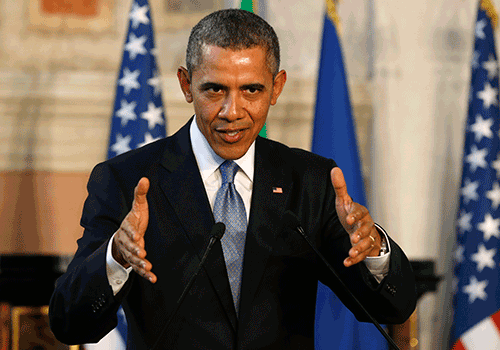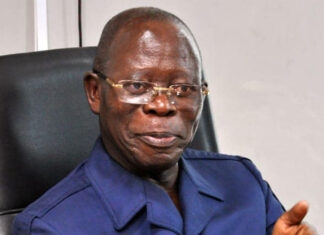US President Barack Obama has arrived in Cuba for the start of a key visit and meetings with President Raul Castro. The diplomatic opening is intended to be the centerpiece of Obama’s presidential legacy.
Heavy rain fell as the presidential party descended from Air Force One on Sunday at Havana’s airport. Obama tweeted his arrival, asking Cubans “What’s up?”
Obama’s three-day trip marks the first US presidential visit to the Caribbean island since 1928, when President Calvin Coolidge arrived in a battleship.
He was greeted by top Cuban officials – but not President Raul Castro. The Cuban leader frequently greets major world figures upon their arrival at Jose Marti International Airport, but he was absent from the tarmac.
Instead, he planned to greet Obama on Monday at the Palace of the Revolution.
Republican Party presidential hopeful Donald Trump took to Twitter to seize on Castro’s absence as evidence that the Cuban President had deliberately snubbed Obama.
However, Obama and Castro will have their fourth meeting at the Palace of the Revolution on Monday, where Castro and his predecessor, older brother Fidel Castro, have led Cuba’s resistance to US pressure going back decades. The two leaders have deep differences to discuss as they attempt to rebuild the bilateral relationship.
The president went directly to greet staff at the new US Embassy building, later joining his wife Michelle and two daughters for a tour of Old Havana. On Monday, Obama is scheduled to hold talks with Castro and meet with US and Cuban businesspeople.
Hours before Obama arrived in the Cuban capital, police took away dozens of demonstrators from the Ladies in White group. The wives of political prisoners meet and hold protests outside a church every week.
Persistent differences remain
Members of dissident group ‘Ladies in White’, wives of former political prisoners, are detained during their protest
The diplomatic opening is a centerpiece of Obama’s foreign policy legacy and the fulfillment of his pledge to engage directly with longtime American enemies.
Persistent differences between the US and Cuba remain, including Havana’s frustration with the US economic embargo and Washington’s condemnation of Cuba’s human rights record.
“The more that US businesses are engaged there, the more that we have people traveling there, the more Cuban-Americans are able to interact with family members that in some cases they haven’t seen in decades, the more likely we are to see the kind of changes that all of us are hoping for,” Obama said in an interview with the CNN television network.
Joining Obama on his trip were 40 US lawmakers and a dozen business leaders.
Obama’s schedule in Cuba is busy. It includes meetings with US and Cuban entrepreneurs as well as an all-out charm offensive to convince the Cuban public that its Cold War foe is no longer a threat.
A highlight of Obama’s visit comes Tuesday when he joins the Cuban president and a crowd of Cuban baseball fans for a friendly game between Cuba’s national team and Major League Baseball’s Tampa Bay Rays.
The president also planned a speech at the Grand Theater of Havana laying out his vision for greater freedoms and economic opportunity in communist Cuba.
Obama makes history with Havana visit
First came the Pope, and now Obama: The US president is making a historic visit to Cuba. The process of rapprochement between the two former arch foes has advanced far enough that it cannot simply be undone.
Cubans gear up for Obama visit
Obama’s visit to Cuba marks “a historic event” for the country’s people, says Cuba expert Bert Hoffmann, Director of the GIGA Institute of Latin American Studies. “Older people in particular are saying: ‘I never thought I’d live to see the day.'”
A US head of state is landing Sunday on the Caribbean island for the first time in 88 years. But whereas former US President Calvin Coolidge arrived in Cuba on a warship back in 1928, Barack Obama and Cuba’s President Raul Castro now want to bury the hatchet.
Even ahead of the historic visit, there has been an abundance of symbolic gestures. For example, Cuba’s foreign minister Bruno Rodriguez Parrila, announced on March 18 that the fee on money transfers from the USA was to be abolished. The fee, amounting to 10 percent of the sum to be transferred, was introduced by the Havana government in 2004. Its abolition raises the income of many Cubans who are financially dependent on money sent by their relatives in the US.
Scholarship for artists from Cuba
The US is also changing laws by allowing Cuban citizens to take up a regular job during their stay; they will also be allowed to open bank accounts and receive visitor grants. In addition, the postal service between the two countries has resumed after a 48-year interruption.
“More has happened in Havana in the past one and a half years than in the five previous decades,” says Hoffmann, who heads GIGA’s Berlin office. He says the stream of US visitors to the island has boosted the Cuban economy, and that people there were hoping this development would continue: more Internet, more dollars, more visitors.
At last! In the Parque Fe del Valle in Havana, Cubans now have Wi-Fi access
But Cuba has not completely turned its back on its previous course. Just last week, Raul Castro awarded Venezuelan President Nicolas Maduro the Order of José Marti, the highest honour given by the communist government. Marduro was commended for having shown “courage and intelligence” in his opposition to a decree signed by the US in which Venezuela was described as a danger to the USA. The year-old decree was renewed by Obama at the start of March, provoking widespread condemnation from Latin American leaders.
Guantanamo as stumbling block
Despite the blossoming relationship between Washington and Havana, the Cuban government is sticking by its demands. One of these has already been fulfilled: In May 2015, the USA struck Cuba from its blacklist of states that allegedly support terrorism. But the lifting of the trade embargo and the handing back of the US military base at Guantanamo Bay to Cuba are still on the to-do list.
“Raul Castro has to make these all-out demands; he is the pillar of the Cuban Revolution,” says political scientist Bernd Greiner from the Hamburg Institute for Social Research. But, as Greiner told German broadcaster Südwestrundfunk, it was also clear that these demands would not be fulfilled completely as they stood.
 Many symbolic gestures: Presidents Castro and Obama on the sidelines of the UN General Assembly in September
Many symbolic gestures: Presidents Castro and Obama on the sidelines of the UN General Assembly in September
The two political experts agree that Raul Castro is key to a successful rapprochement between the two countries. “It is extremely important that Raul Castro, and not his successor, receives President Obama,” says Hoffmann. Otherwise, he adds, everyone would be able to say, “Fidel would never have done that.” But this way, Raul Castro is able to say the same thing in the name of the revolution, “with all the historical legitimation,” according to Hoffmann.
Social inequality
In Cuba itself, despite all the euphoria about the economic and political shift towards more openness, there is growing criticism of the increasing social inequality in the country. While restaurant or bar owners are earning big dollars from tourists, teachers and doctors in the country are left out in the cold. “The cost of living is rising rapidly,” according to a piece in the oppositional magazine “Convivencia,” which further reports growing violence and a problem with shortages.
Many outside of Cuba also see contradictions in the country’s current political approach. “For the government, the rapprochement is not easy at all, as the Cuban Revolution receives its legitimation from its animosity towards USA,” Hoffmann says. He argues that the process of political reform at a domestic level has not gone as far as it has to, and that it is neither coherent nor transparent.
But Bert Hoffmann says he feels there is no alternative to the rapprochement with the USA. “The USA is the obvious trade partner for practically everything, given Havana’s proximity to Miami,” he claims, adding, “The two million Cuban-Americans in the USA alone bring more money to Cuba than the EU does.”
-DW.COM













